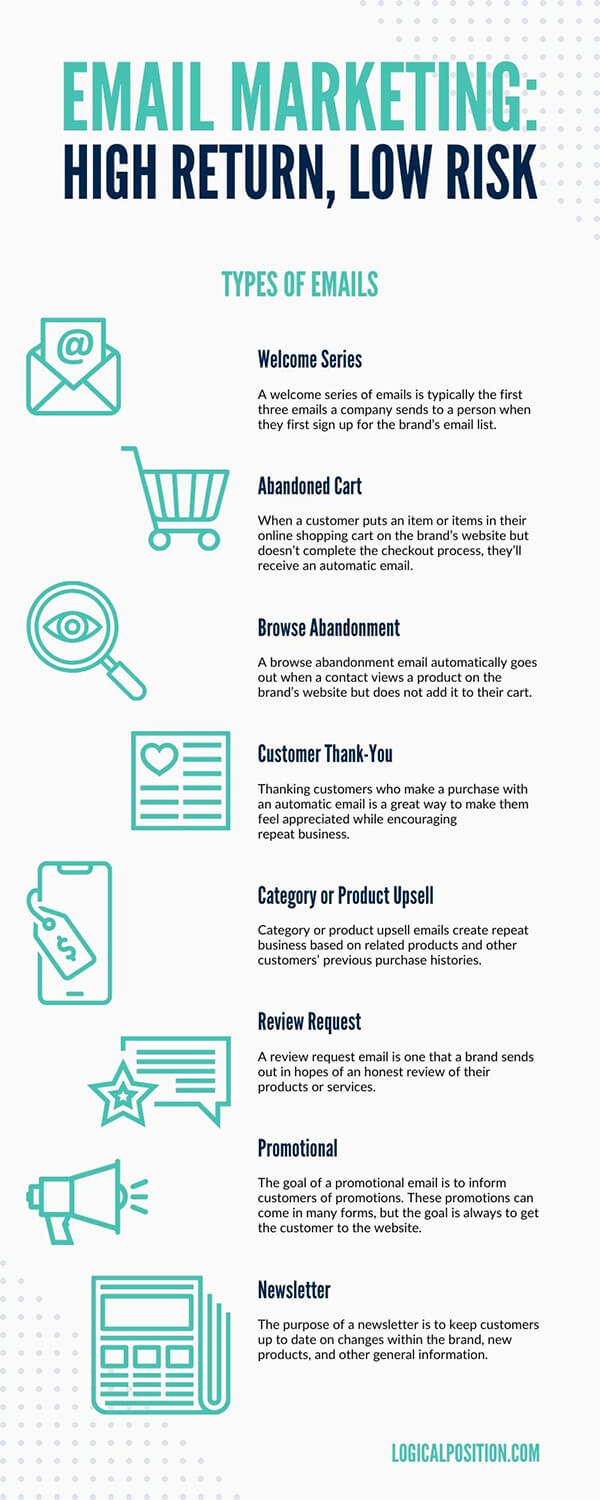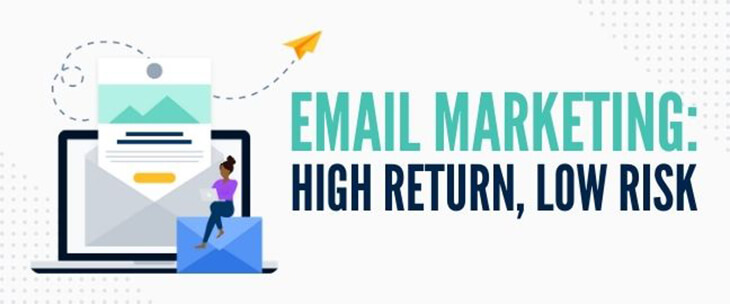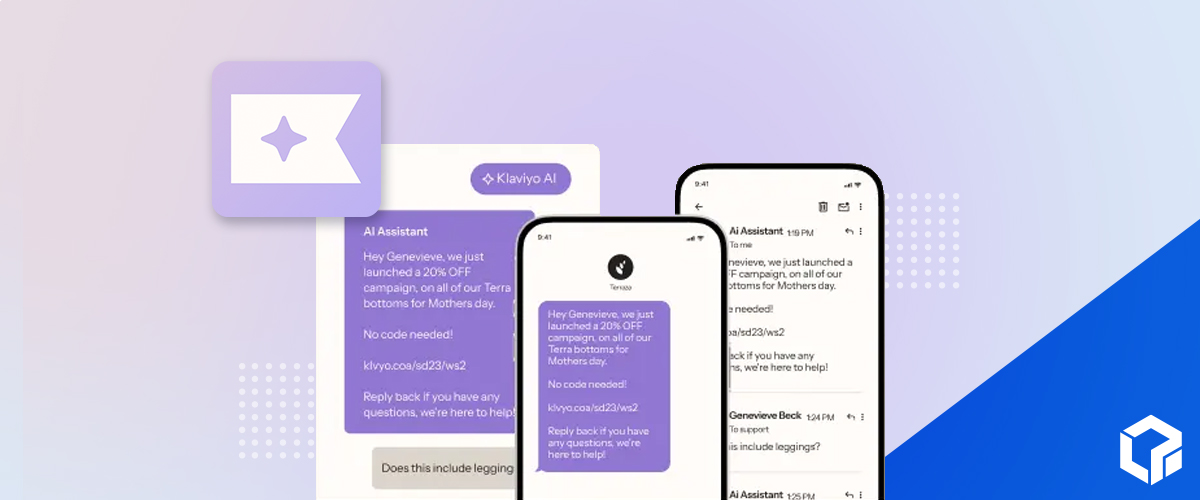Email marketing is one of the best investments that a company can make for itself. Customers like to feel connected to brands; email marketing accomplishes this and much more. It is a way to connect with a customer base while helping a business grow and achieve its full potential.
There is risk involved with any investment, but the risk with email marketing is very low. The risk involved in an expertly crafted email is virtually nonexistent. Engagement is a pillar of email marketing, and developing an understanding of the different types of emails is vital. Email marketing’s high return comes with low risk; uncover how this is possible so that your business can begin enjoying the advantages it brings.
Types of Emails
Email marketing encompasses many different types of emails that companies can send to their clients and customers. Different email types accomplish differing things.
Welcome Series
A welcome series of emails is typically the first three emails a company sends to a person when they first sign up for the brand’s email list. This series sets out to accomplish three primary objectives:
- Let potential customers connect with the brand by describing why they should like the brand.
- Show potential customers how to connect with the brand via social media channels.
- Display best-selling items to inform potential customers of what the brand offers.
When a person inputs their email to receive newsletters and other correspondence from the brand, this welcome series should trigger automatically.
Abandoned Cart
Abandoned cart emails automatically go out to customers who have signed up to receive emails from a brand. When a customer puts an item or items in their online shopping cart on the brand’s website but doesn’t complete the checkout process, they’ll receive an automatic email. This communication serves to remind them to complete the purchase or revisit the website.
Browse Abandonment
A browse abandonment email automatically goes out when a contact views a product on the brand’s website but does not add it to their cart. The email’s purpose is to remind the potential customer of the item they were considering and encourage them to add it to their cart and complete the checkout process.
Customer Thank-You
Thanking customers who make a purchase with an automatic email is a great way to make them feel appreciated while encouraging repeat business. Customers who feel that a company appreciates and values their loyalty are much more likely to go back and shop with that brand again.
Pro Tip: Many brands find success in creating repeat customers by including a discount for a future purchase in their customer thank-you emails.
Category or Product Upsell
Category or product upsell emails create repeat business based on related products and other customers’ previous purchase histories. There are two primary forms of category or product upsell emails.
You Bought a Product—Here are Others You May Like
When you send out an upsell email, the goal is to get that customer to purchase another product. For example, suppose a customer purchases a pair of shoes from an e-commerce website. In that case, that brand may send out an upsell email saying, “You bought this rug. These throw pillows we sell match it; you may be interested.”
You Bought a Product—Here are Things Other People Bought
You can also send emails out to try and upsell your customer based on previous customer trends. For example, “You bought this rug. Other customers who bought it also bought this rug pad. Click to browse more.”
Both emails aim to upsell the customer.
Review Request
A review request email is one that a brand sends out in hopes of an honest review of their products or services. Reviews help bring in future business and can provide helpful feedback that enables brands to better themselves.
Completing reviews takes up a customer’s time and doesn’t typically offer any incentive for the customer. These emails are asking the customer to complete a favor. As such, review templates must be easy to use and simple to fill out to keep customers happy.
Promotional
The goal of a promotional email is to inform customers of promotions. These promotions can come in many forms, but the goal is always to get the customer to the website. These emails may include:
- Coupons
- Exclusive access to sales or products
- Sales or clearance events
- Discounts
Newsletter
The purpose of a newsletter is to keep customers up to date on changes within the brand, new products, and other general information. Newsletters keep customers informed and thinking about the brand, even when they’re not shopping.

The Importance of Automation
Setting up automated emails is the best route to a successful email marketing campaign. When emails trigger automatically based on different customer behaviors, the return on investment for email marketing can skyrocket. Constant communication with customers drives brand engagement.
People don’t look at a company’s website periodically to keep in touch, so emails serve to maintain communication and keep people engaged.
Setting up automation serves a brand in many ways. It scales with traffic to the site and works as a long-term strategy.
Once you set up your email automation, it continues to serve your business.
Benefits of Email Marketing
Email marketing comes with a slew of benefits, which is why so many companies invest in it. If your brand is not reaching the goals you set for it, email marketing may be the answer. It gives customers a chance to fall in love with your brand and engage with it at a deeper level.
Cost of Conversion
Setting up automation is the most labor-intensive part of email marketing. Because the email content must be high-quality and include attractive and on-brand graphics, brands should leave this to professional copywriters and graphic designers. Once these systems are in place, constant communication effectively drives sales.
The cost of conversion for email marketing is the lowest out of every marketing channel available.
When a brand sends out emails to customers, it doesn’t have to build initial trust. The customer and the brand’s initial trust developed when the customer gave an email address to the brand. Therefore, when the brand reaches out via email, it’s not as tricky a conversion as a cold call or a cold email.
Increased Customer Lifetime Value
Regular and consistent communication shows customers that a brand is reliable, dependable, and robust. Brands that invest in the relationship between themselves and their customers often find a stronger bond.
Email marketing increases the customer lifetime value by building trust and a consistent rapport between brands and customers.
Email marketing truly brings tremendous value to your business. It allows for a broad reach and connects you with people who already have a baseline trust in your brand. The conversion cost is low, and automation makes the campaign less time-consuming than some other digital marketing strategies. Coupling email marketing efforts with other forms of digital marketing can help your brand reach its full potential.
If you’re looking for the high return and low risk that email marketing offers, contact Logical Position today to learn more about our targeted email marketing campaigns. Our client, Vincent’s Meat Market, found incredible success with our email marketing campaigns, experiencing a cost of conversion of less than $3 per email sent overall.




